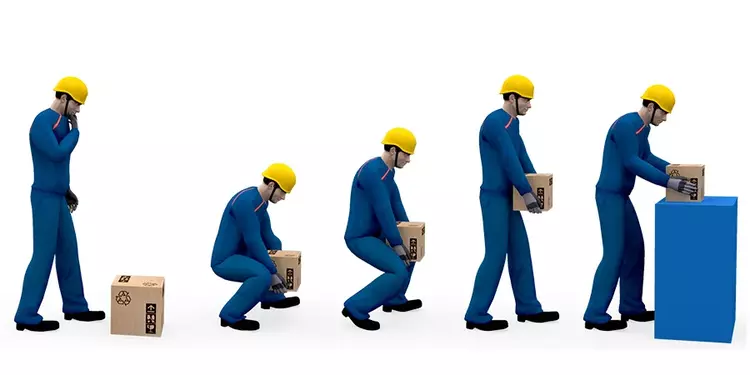
Manual handling refers to moving or supporting a burden with the hands or using physical force. It entails moving, carrying, pushing, tugging, and lifting a load. An object that can be moved, such as a box or package, a person or an animal, or something that is being pushed or dragged, such as a roll cage or pallet truck, is referred to as a load.
What are manual handling injuries?
Injuries caused by manual handling are a subset of musculoskeletal illnesses (MSDs). Musculoskeletal disorders are illnesses and injuries that can hurt the back, joints, and limbs.
Where can manual handling risks be found?
There are risks associated with manual handling in all workplaces, including farms, construction sites, offices, warehouses, hospitals, and when making deliveries. Risk factors for developing MSDs include strenuous physical labour, repetitive handling, uncomfortable postures, and previous or current injuries or conditions. Additionally, a non-job-related injury, such as one sustained during sports, may worsen due to employment.
While you can prevent some MSDs by taking the steps outlined here, you cannot prevent all of them. Encourage employees to notify you or their worker representative of any symptoms as soon as possible, before they worsen, so you can take precautions to lower the risk.
Consider seeking guidance from an occupational health practitioner regarding a worker’s fitness for work and any limits or changes to their employment that may be necessary if your employees have manifested symptoms, especially if they work in a fitness studio.
What are manual handling regulations?
You must evaluate your employees’ health and safety risks under the Management of Health and Safety at Work Regulations.
You should also abide by the Manual Handling Operations Regulations, which identify dangerous manual handling of loads (the Manual Handling Regulations).
According to the Manual Handling Regulations, there is a clear hierarchy of steps you must take to reduce the hazards associated with hazardous manual handling.
- Avoid dangerous manual handling tasks “as far as reasonably feasible”;
- Evaluate the risk of worker injury from any dangerous manual handling that cannot be avoided;
- Lower the risk of worker injury from hazardous manual handling to the least reasonably practical level.
Workers also have duties. They should
- Ensure that their activities do not endanger others by adhering to the systems of work established for their health and safety,
- Use any equipment provided for that purpose properly,
- Cooperate with the employer on health and safety issues, inform them about changes, and identify hazardous handling activities.
Consult with and involve the staff. Your employees and their representatives are familiar with the dangers associated with the workplace and frequently provide helpful suggestions for reducing them.
How to access manual handling?
When performing potentially dangerous manual handling tasks that cannot be avoided, evaluate the risk of injury.
You should take into account the assignment, the workload, the setting, and each person’s capacity, for instance:
- the frequency of the task
- how far the load is lifted, lowered or carried
- the frequency of the task
- poor floor surfaces
- poor lighting, extremes of temperature
- workers’ strength, fitness and underlying medical conditions
- the nature of the load
- the weight of the load
- the postures adopted
How to avoid hazardous manual handling?
You can stay away from risky manual handling tasks by:
- Automating or mechanising the process, restructuring the operation to prevent transferring the load
- Designing a plant or work system is the optimal moment to decide about mechanisation or automation.
- Design a process’ arrangement to minimise the mobility of materials.
To lessen the risk of damage, think about adding things like a conveyor, chute, pallet truck, electric or manual hoist, or lift truck. Manual handling dangers can also be decreased or eliminated with mechanical aids.
Manual Handling Training
Safety in manual handling can be achieved through information and training. The handling activities should always be designed with safety as the primary consideration. However, it cannot defeat a problem by itself. If the activity cannot be avoided and you have already taken precautions to lessen the risk, manual handling training is crucial to further manage the risk of damage.
- inadequate mechanical assistance,
- poorly designed activities,
- inappropriate weights, and
- an unsatisfactory working environment.
Hurak’s manual handling training encompasses information relevant to the position, such as:
- Factors that increase the risk of injury from manual labour;
- Systems of work that is appropriate for the individual’s tasks and environment;
- Usage of tools and machinery
- How to handle objects safely, including appropriate handling practices;
- Practical task that is appropriate for the position to enable the trainer to spot and correct anything the trainee is performing unsafely;
- Ways to report symptoms and injuries.



